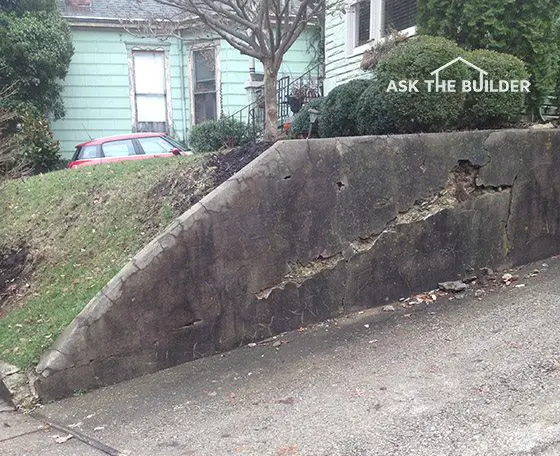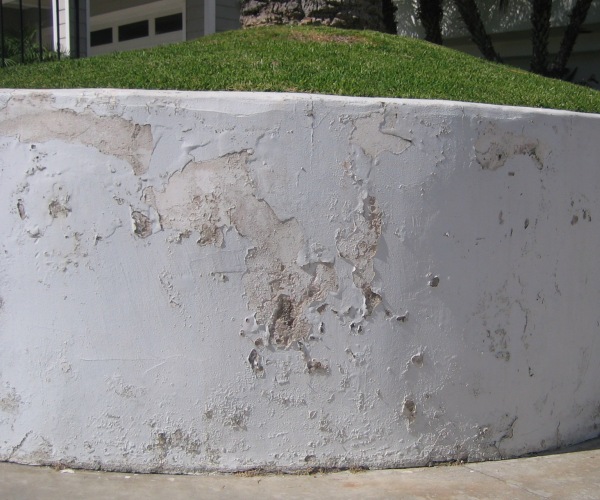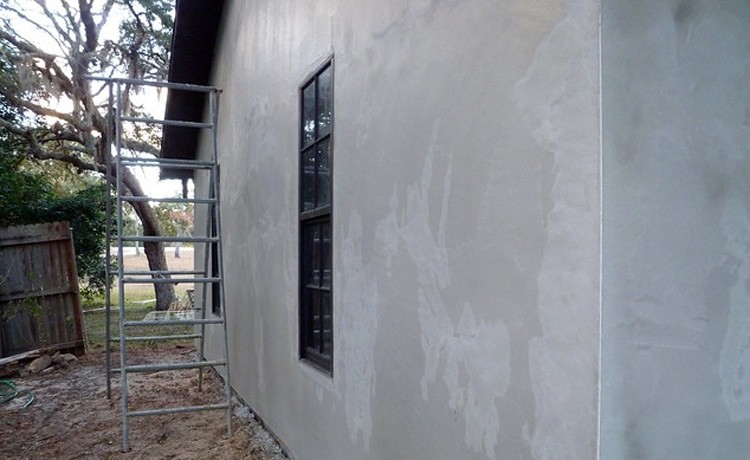Stucco Peeling From A Concrete Retaining Wall

These stucco problems allow moisture to seep into the stucco walls causing both peeling paint and efflorescence.
Stucco peeling from a concrete retaining wall. This first coat is known as the scratch coat this coat helps the final coat bond properly to the wall. How to repair exterior cinderblock walls with stucco. Since the early 19th century stucco has been used to cover less appealing construction materials such as concrete metal and cinder block. Under the right circumstances mold can invade stucco.
I couldn t pass up the opportunity to show this bare concrete retaining wall and an idea that would improve the look of the home exterior and not have it be the eyesore of the neighborhood. To prevent recurrence of peeling wash the wall and let it dry completely before applying the primer and paint. Apply the first coat of stucco to the concrete surface. Clean the area well with a wire brush or low pressure steamer and wet the area with a hose or sprayer to keep the dry masonry from soaking water in causing the parge to cure too fast.
Stucco a masonry or concrete wall. To prevent stucco damage from affecting your retaining walls create a moisture barrier that has good drainage. Bad ventilation can also cause stucco problems that result in peeling paint. There are many cool retaining wall options and i like this one the best.
After the bonding agent has been allowed to dry the stucco can be applied directly to the wall. Allow the scratch coat to harden slightly. Special cleaning solutions can be used to prepare walls for painting. Also it is recommended that you refrain from painting retaining walls because of the increased risk of blistering.
The application of the stucco should begin with a scratch coat a 1 4 to 1 2 layer of mortar which is. Most of these products promote good adhesion between the substrate and the paint improve recoatability of previously painted surfaces and kill mold spores preventing future mold growth. Use the flat finishing trowel to spread the stucco evenly across the surface. Designed for outside use it wasn t until late 19th century that builders started to use it on interior applications as well.
A little stucco and a few natural rocks to cap it off and you ve got it. This will allow the water to escape from behind the wall rather than building up and causing damage. To apply stucco to your existing brick block or concrete wall first brush a concrete bonding agent onto the wall then allow it to dry completely.














































